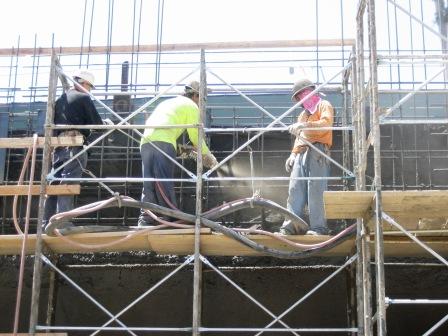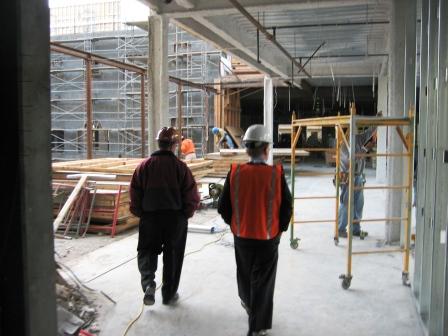

Printable PDF version
Subscribe to our newsletter
Integrated Project Delivery
West’s Grand Central
The Growth/Debt Debate
Construction
Management Specialists
111 Pine Street, Suite 1315
San Francisco, CA 94111
(415) 981-9430
4361 35th Street
San Diego, CA 92104
(619) 550-1187
8538 173rd Avenue NE
Redmond, WA 98052
(206) 571-0128
www.TBDconsultants.com
Integrated Project Delivery
Gordon Beveridge
Much has been written in the technical press in the last few years on how to define IPD and what advantages may ensue from the implementation of IPD principles. Is it really a new method of Project Delivery or a twist on established formats? And what may be the advantages or disadvantages? We hope to answer some of these questions in this two part article. Definitions are not always easy to extract however the most recognizable is from the draft of an AIA document (AIA/AIACC Integrated Project Delivery Guide anticipated in 2010) and is as follows: "Integrated Project Delivery is a project delivery method distinguished by a contractual agreement between a minimum of the owner, design professional and builder where risk and reward are shared and stakeholder success is dependent on project success".
The AIA has endorsed two excellent publications which are referenced at the end of the paper mentioned above. These two prominent publications are 1) Integrated Project Delivery: Case Studies, and 2) Integrated Project Delivery: A Guide.

The "Guide" is a comprehensive study which examines the evolution and parameters of IPD, whereas the “Case Studies” examines seven real projects and elicits feedback on what was accomplished.
Firstly the idea of IPD is not entirely new and has been used in various forms and sectors in both the UK and Australia with good results. There are claims of superior efficiency and total cost savings ranging from 2-20% over more traditional set ups.
Clearly the move for widespread adoption of IPD may not suit all projects or owners. The thrust for change in the US has derived in many cases from the medical sector, where projects can be very technical, large and with high risks for all parties given the variables and potential problems. Traditionally the Owner, Designer and Contractor would have well defined contracts which attempted to move risk from one party to the other. Prudent parties would build in appropriate levels of risk into the pricing which in the end the owner would end up paying for, whether these risks came to pass or not. It also sets up entrenched positions which add to the defensive amount of administration required to execute a contract.

Owners and all parties recognized there could be a better model for project delivery that brought all parties together, and bound them in some legal format to align them all with the common goal of reducing uncertainty/risk, administration, and at the same time take advantage of the evolution of Building Information Modeling (BIM). This calls out that all parties must be adaptable to change and embrace a transparency and unity of purpose which requires a significant mind shift.
The characteristics of IPD are well defined in the Case Studies and include most if not all the following:
- Early involvement of the Owner, Designer and the Contractor to set goals and parameters
- Some form of multi party contract
- Some form of sharing risk and rewards
- Liability waivers among the principal parties
- Definition of how the parties as a group were to make decisions
To enable the above to be implemented it was also desirable to define in fine grain where the teams would meet or co-locate, how to deliver open communication, and how transparent the financials of each party would be.
The traditional roles and parameters needed a mind shift to engender a more interactive, embracing process, where the typical boundaries are dismantled and much more effort is put in at the early phase of design. The owner however, unlike the typical role, must be more involved in the process and accordingly the time demands will require their input on a continuous process. This process is not for the owner who is passive.
From the contractors perspective the team will demand more cost information early in the process to make informed decisions and in tandem more design time will also be spent up front to generate what the contractor/subcontractors require.
Making well informed decisions early in the process assists in removing many of the inherent risks in the traditional delivery methods
Conclusions from Study Projects were as follows:
- The projects all met clients’ expectations with respect to budget, schedule and sustainability.
- Risk: By synchronizing goals of the owner/design team/contractor and making them jointly responsible there was lower risk for all parties.
- Contingencies for Risk: Traditional contracts try to shift risk from one party to another and attempt to narrowly define roles and responsibilities. Each party works in their own "silos" which limits collaboration and alignment of focus. The owner often ends up paying for these hidden contingencies.
- Financial incentives: The merit of financial incentives has little consensus. Some said that common incentives are essential to focus all parties for common goals. Others perceive incentives have the effect of creating conflicts between team members.
- Umbrella Insurance: It is desirable but very expensive to implement and accordingly may only be suitable for larger projects. However IPD should reduce claims and disputes and eventually insurance companies will become familiar with it, and give premium reductions.
- It is recognized these are still early days for IPD and many clients and participants will have to go through experiments to decide what will work effectively.
This article will be concluded in the next newsletter.
West’s Grand Central
Geoff Canham
San Francisco breaks new ground as it moves California's transportation into the 21st century. In this article we look at the new Transbay Transit Center soon to arrive at a downtown near you.
The Growth/Debt Debate
Geoff Canham, Editor
We need growth to pull us out of the recessionary hole we are in, but the mountain of debt is growing and we to tackle that too. Here we look at the way these demands pull against each other, and how they affect progress in our economic recovery.
Design consultant: Katie Levine of Vallance, Inc.